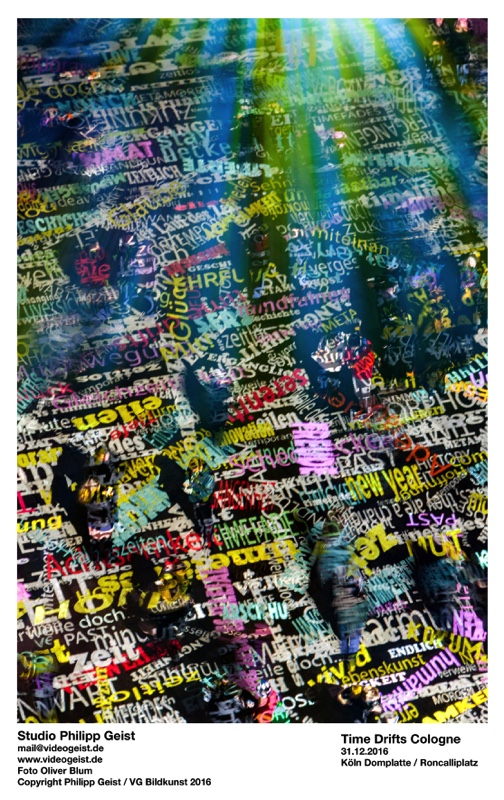During the trade fair duo imm cologne and LivingKitchen, Koelnmesse will present the light installation “Time Drifts Cologne II” by the Berlin-based light artist Philipp Geist. The installation can be seen in the vicinity of Cologne Cathedral on 15 and 16 January 2017 from 6 p.m. to 10 p.m. This event will be an extension of the artist’s media performance “Time Drifts Cologne” on New Year’s Eve 2016 into the 2017 trade fair year.

“I’m delighted that we have been able to prolong the performance of Philipp Geist and thus enable even more people to experience this spectacular work of art as part of imm cologne,” says Gerald Böse, President and Chief Executive Officer of Koelnmesse GmbH. “Through this installation we would like to showcase the theme of light, which is very important for us. We also want to send another positive message to the world from the city of Cologne.”

The light installation will be projected in the same way as it was on New Year’s Eve 2016, onto the western part of Cathedral Square and Roncalliplatz and the façades of the Dom Forum, the Roman-Germanic Museum and the Dom Hotel. Once again, the installation will visualise the themes of time and space as well as wishes for the year 2017 and will display concepts that have been submitted to the artist by Cologne residents and others over a period of several weeks. The concept is being refined by the artist with imm cologne in mind. The concepts and associations in the installation are being translated into many different languages in order to address the international visitors who will come to Cologne for imm cologne. In addition, the words are being combined into different pictorial compositions.

More about the project
In this installation, the artist does not use screens but instead projects concepts and associations on a large scale onto the ground surface of Roncalliplatz and the façades of the Dom Forum and the Roman-Germanic Museum. To create his effects, Philipp Geist works with video mapping installations, large-scale static projections and theatre fog. This creates an interplay between the concrete and touchable projections onto the architecture, the ground that can be walked upon and the transparent and very fleeting projection surfaces created by the fog. Concepts become briefly visible as metaphors of impermanence and immediately disappear. Visitors themselves become part of the installation. They can walk through the installation and observe it from a variety of perspectives. The installation will be accompanied by ambient sound produced by Martin Gretschmann.

